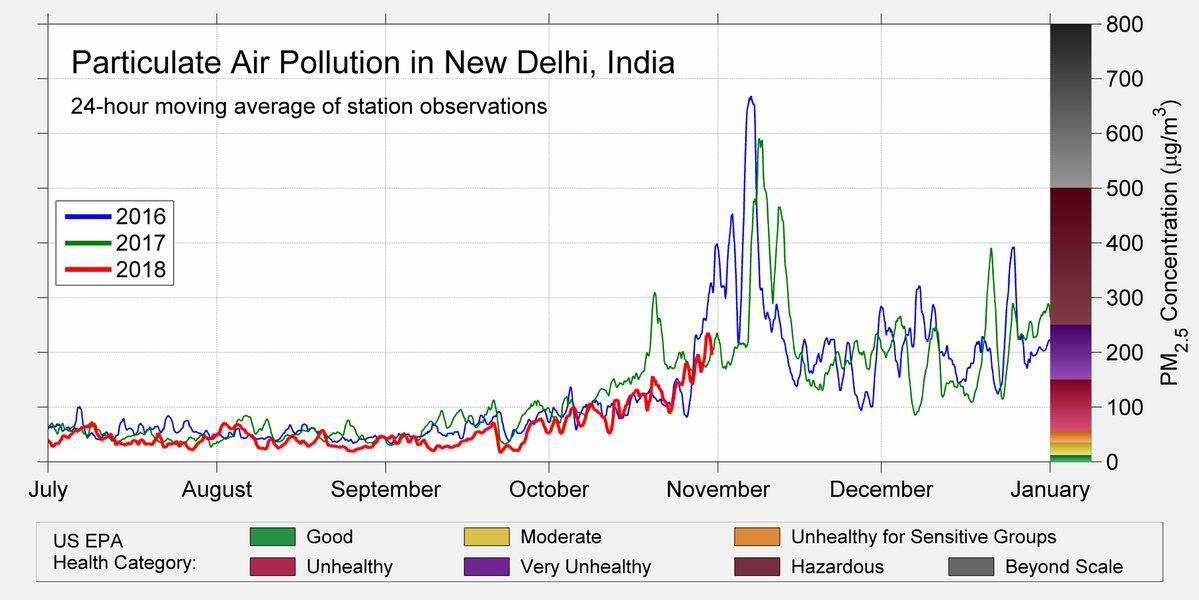Air pollution is responsible for many health problems in the urban area. This paper provides an evidence-based insight into the status of air pollution in Delhi and its management.Calculation of pollution is based on the presence of particulate matter, that is PM 2.5 and PM10 .These are hazardous pollutants present in the air. The maximum permissible limit for PM2.5 and PM10 is 60μg/m3 and 150μg/m3 respectively but the normal concentration of PM2.5 and PM10 in DELHI varies from 247 to 350μg/m3, the max concentration of particulate matter reaches 999μg/m3 in November 2018 which is the maximum limit of particulate matter, causing worst scenario for air pollution in DELHI. Emission of CO is also excess, permissible limit being 2000μg/m3 presence being 6000μg/m3.Other gases causing pollution is categorized as methane, non-methane and hydrocarbon. The PM10 and PM2.5 are standard includes particles with a diameter of 10μm and 2.5μm. These small particles are likely to be responsible for adverse health effects. WHO declared DELHI in the top 25 “world‟s most polluted cities”. Life expectancy decreases by 6 years, which causes premature deaths, and around 14000 premature deaths were reported.
Many govt. initiative took place regarding pollution control, but didn‟t work that much, more initiatives are on the way like Air visuals, air cleaners of public usage, are on the way.
We as civil engineers, we can reduce air pollution by creating „green buildings‟, we are working on a concept named „green highways‟, and other various measure to control pollution, during construction of highways or any other structure.
